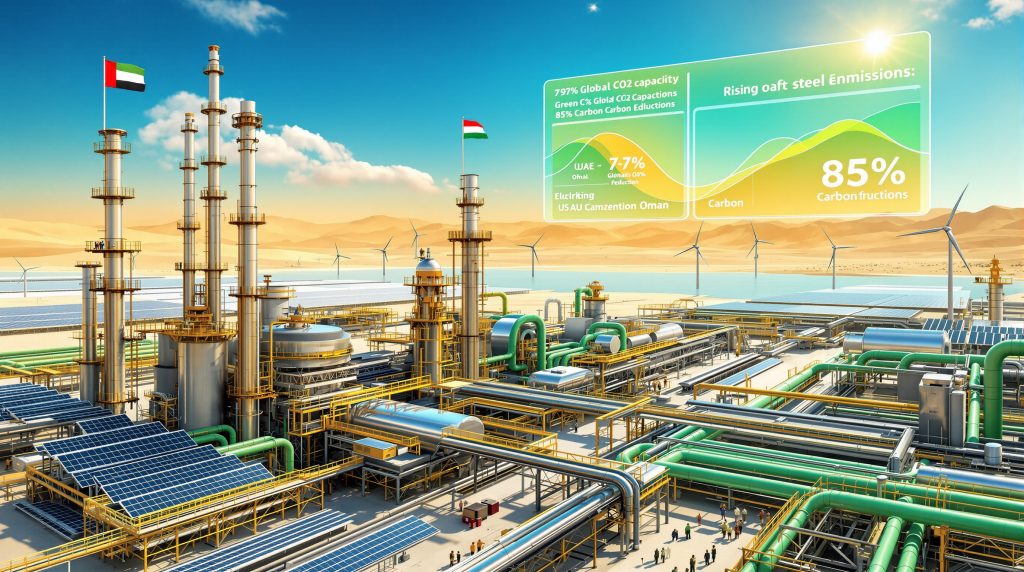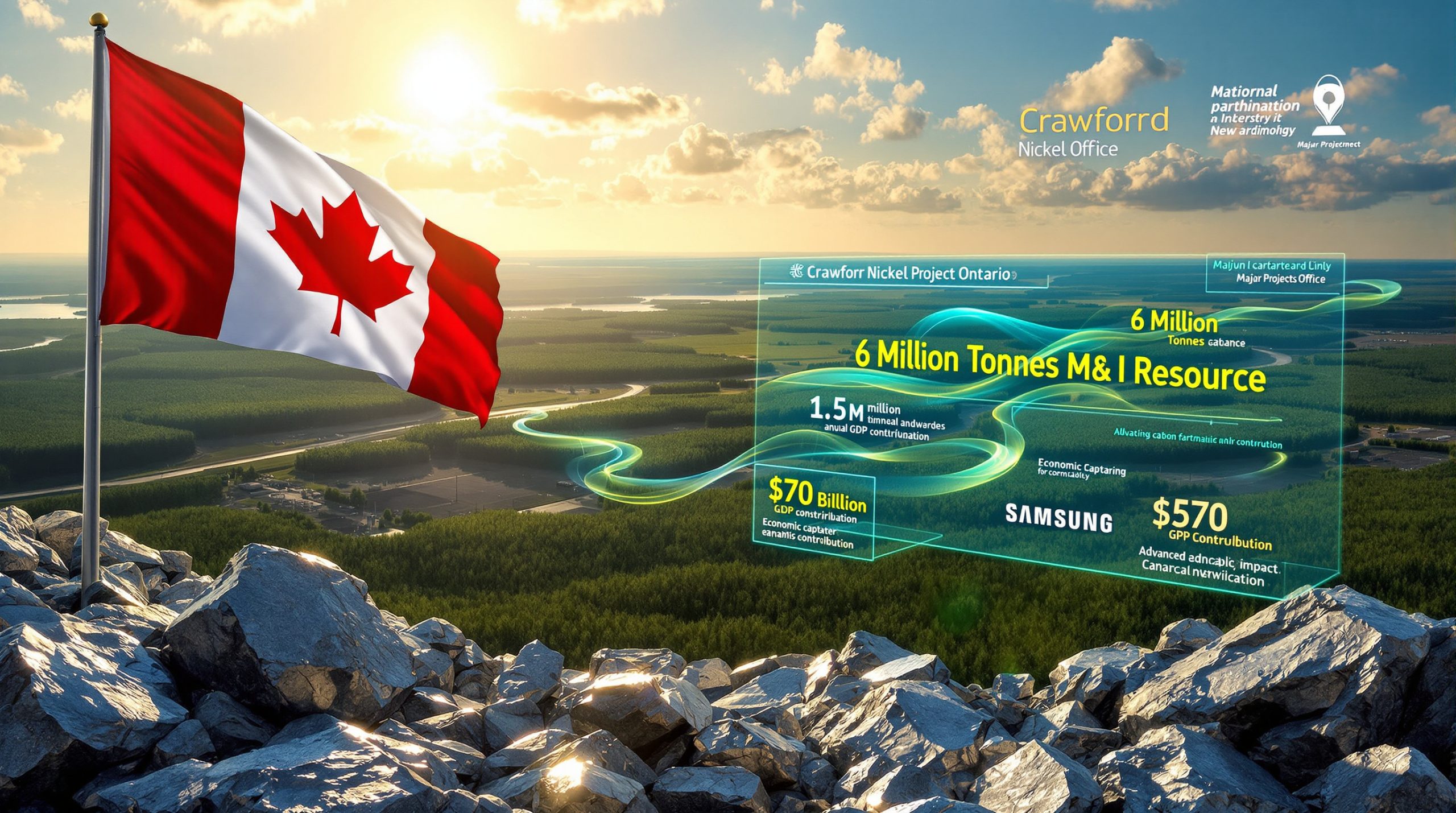Understanding the Green Steel Revolution Through Strategic Scenario Modeling
The global steel industry stands at an unprecedented crossroads where traditional production methods face systematic disruption from environmental regulations, energy cost volatility, and capital allocation shifts toward sustainable infrastructure. Furthermore, this transformation extends beyond simple technology substitution to encompass fundamental changes in supply chain geography, competitive positioning, and economic value creation models that align with broader industry evolution trends.
Strategic scenario modeling reveals that regions possessing abundant renewable energy resources, established direct reduced iron (DRI) infrastructure, and favourable regulatory frameworks hold decisive advantages in capturing market share during this industrial transition. The convergence of these factors positions certain geographical zones not merely as participants in green steel development, but as potential architects of the industry's future structure, particularly in the context of global energy transition and security initiatives.
Analyzing the Green Steel Transformation Through Multiple Strategic Lenses
Technology Pathway Assessment and Carbon Intensity Benchmarking
The green steel transition in the Middle East represents a fundamental departure from blast furnace-basic oxygen furnace (BF-BOF) steelmaking, which currently generates approximately 1.8 to 2.0 tonnes of CO2 per tonne of crude steel. The steel industry's contribution of 7 to 9% of worldwide CO2 emissions positions it among the most carbon-intensive industrial sectors globally, creating both regulatory pressure and market opportunities for low-carbon alternatives.
Direct reduced iron electric arc furnace (DRI-EAF) technology powered by natural gas achieves 1.5 to 1.7 tonnes CO2 per tonne of steel, representing meaningful emissions reduction compared to traditional methods. When powered by renewable electricity, DRI-EAF processes can achieve carbon intensities as low as 0.3 to 0.5 tonnes CO2 per tonne of steel, establishing a clear pathway toward decarbonisation.
The technical superiority of DRI-EAF stems from its modular design, lower capital requirements for greenfield projects, and separation of reduction and melting stages that enables superior quality control. Modern DRI facilities using natural gas achieve 90 to 95% reduction efficiency at process temperatures between 900 to 1,100 degrees Celsius, consuming 7 to 9 gigajoules per tonne of DRI produced.
Regional Energy Cost Structure Analysis
Energy cost differentials create structural competitive advantages that extend beyond cyclical commodity price movements. Natural gas pricing in Gulf Cooperation Council nations averages approximately $4.80 per million British thermal units (MMBtu), compared to European natural gas exceeding $10 per MMBtu as of late 2025. This $5.20 per MMBtu differential translates to approximately $40 to $50 per tonne cost advantage for DRI production in Middle Eastern facilities.
The region's solar resource availability of approximately 3,500 hours of sunshine annually provides 50 to 100% higher solar resource availability compared to global averages of 1,700 to 2,200 hours. This renewable energy abundance supports both current natural gas-based operations and future hydrogen-powered steel production through electrolysis capacity deployment.
Wind resource consistency along Gulf coastal areas and elevated terrain generates typical wind speeds of 7 to 9 metres per second at hub height, enabling capacity factors of 25 to 35% for modern turbine installations in optimised locations.
Current Market Position and Production Distribution Analysis
Global DRI Production Concentration Patterns
Market dominance in direct reduced iron production reveals significant geographical concentration that positions certain regions advantageously for green steel transition leadership. According to industry data presented at the 28th Middle East Iron & Steel Conference, global DRI production totals 141 million tonnes annually, with 63 million tonnes originating from the Middle East and North Africa region, representing 44% of worldwide output.
Global DRI Production Distribution Analysis:
| Region | Production Volume | Market Share | Primary Technology | Competitive Position |
|---|---|---|---|---|
| MENA | 63 million tonnes | 44% | Natural gas DRI | Leadership position |
| Asia | 45 million tonnes | 32% | Coal/gas hybrid | Technology transition risk |
| Americas | 20 million tonnes | 14% | Natural gas DRI | Moderate positioning |
| Others | 13 million tonnes | 10% | Various technologies | Fragmented market |
The concentration of 50% of global DR-grade pellet capacity within the MENA region further reinforces structural advantages through vertical integration opportunities and supply chain optimisation potential. This pellet capacity concentration reflects decades of investment in iron ore processing infrastructure optimised for natural gas reduction processes, supporting the region's green metals leadership aspirations.
Production Efficiency and Carbon Performance Benchmarks
Leading regional facilities demonstrate operational excellence metrics that establish competitive benchmarks for the broader industry. Sohar Steel operations achieve DRI productivity of 182 tonnes per day per cubic metre of reactor volume, exceeding typical industry averages of 150 to 170 tonnes per day per cubic metre. This productivity advantage reflects optimised reactor design, superior pellet quality, and efficient gas utilisation patterns.
Carbon footprint performance at advanced facilities reaches 1.57 tonnes CO2 per tonne of steel produced, positioning these operations near the lower end of natural gas DRI-EAF route benchmarks. Combined with 100% capacity utilisation, 95% availability rates, and near-zero quality rejection, these performance metrics demonstrate operational maturity that supports premium market positioning.
Quality specifications for pellet production include iron content exceeding 67% and tumble index above 96%, indicating benchmark-level durability and metallurgical properties suitable for both domestic consumption and export market penetration.
Infrastructure Investment Drivers and Economic Multiplier Effects
Regional Demand Growth Dynamics
Infrastructure spending across GCC nations reached $275 billion in 2024, representing a remarkable 206% increase from 2020 levels of $90 billion, creating unprecedented steel demand visibility.
Real estate market expansion demonstrates robust growth patterns with Dubai and Abu Dhabi experiencing double-digit growth in both transaction volumes and pricing. This construction activity surge drives immediate steel consumption while establishing long-term demand stability through urban development momentum.
Regional steel demand projections indicate consumption reaching 59 million tonnes by 2025, creating opportunities for import substitution given that GCC imports from Asian suppliers exceed $16 billion annually. This import volume represents significant economic value that could be captured through domestic production capacity expansion and downstream manufacturing development, making it a critical component of comprehensive investment strategy components.
Economic Value Creation and Employment Impact Assessment
Steel industry investment generates substantial economic multiplier effects through downstream value creation and employment generation. Industry analysis indicates that each dollar invested in steel production creates $2.50 in broader economic value, while individual steel sector employment supports more than 40 downstream jobs through supply chain integration and manufacturing ecosystem development.
Industrial hub development potential suggests that each one-million-tonne steel production facility can support up to 8,000 industrial jobs through direct employment, supplier networks, and downstream processing activities. This employment density creates significant economic development opportunities for national diversification strategies.
Capital expenditure expectations remain robust, with 75% of regional companies planning increased infrastructure spending over the next two to three years, providing demand visibility that supports long-term capacity expansion planning and investment decision-making.
Technology Advancement and Hydrogen Transition Pathways
Hydrogen Production Infrastructure Requirements
Hydrogen-based steel production requires substantial electrolysis capacity deployment with alkaline electrolysers consuming 50 to 65 kWh of electrical energy per kilogram of hydrogen and proton exchange membrane (PEM) electrolysers requiring 45 to 60 kWh per kilogram. Overall system efficiency from renewable electricity to usable hydrogen typically ranges between 60 to 75%, establishing energy intensity parameters for green hydrogen steel production.
Regional renewable energy expansion projects demonstrate commitment to hydrogen readiness. Masdar and Emirates Steel have announced successful pilot projects including 280 MW solar photovoltaic projects and 1.4 GW combined solar plus battery storage facilities, creating the electrical generation capacity necessary for large-scale electrolysis operations.
Investment Scale and Technology Deployment Timelines
Major capacity expansion projects illustrate the capital intensity and technical complexity of the green steel transition in the Middle East. The $1.3 billion Duqm facility development represents hydrogen-ready Energiron technology deployment, with 73% of first DRI unit ordering completed as of late 2025, demonstrating rapid project execution capabilities.
Technology readiness assessment indicates that natural gas to hydrogen DRI conversion schedules require coordinated infrastructure development including hydrogen distribution systems, storage facilities, and grid integration for renewable energy sources. Workforce development needs for advanced steel technologies represent additional investment requirements for successful transition implementation.
Competitive Positioning and Market Access Strategies
Export Market Development and Certification Requirements
Green steel certification and verification processes create market access opportunities while establishing technical barriers for competitors lacking appropriate documentation. EU Carbon Border Adjustment Mechanism (CBAM) compliance requirements increasingly influence global trade patterns, favouring producers with verified low-carbon credentials and transparent emission reporting capabilities.
However, potential trade war effects must be considered when developing long-term export strategies. Premium market positioning for green steel products commands price premiums of 5 to 15% depending on certification rigour and market conditions, creating revenue opportunities that offset higher production costs associated with renewable energy integration and advanced technology deployment.
Regional integration opportunities through supply chain optimisation and cross-border cooperation frameworks support export market development while reducing logistics costs and improving delivery reliability for international customers.
Strategic Risk Assessment and Scenario Planning
Long-term demand uncertainty for natural gas given global decarbonisation policies creates transition timing risks for current operations while creating first-mover advantages for early hydrogen adoption. Energy transition risks must be balanced against competitive positioning opportunities in rapidly evolving global markets.
Water availability constraints for hydrogen production via electrolysis require careful resource planning and potential desalination capacity development, adding infrastructure complexity and capital requirements to green steel development programmes.
Technology transfer and intellectual property development opportunities exist for regional steelmakers to monetise operational expertise as global competitors transition from coal-based blast furnace operations to DRI-EAF routes.
Future Market Leadership Scenarios and Investment Implications
Production Capacity Expansion Pathways Through 2030
Three distinct scenarios emerge for the green steel transition in the Middle East market evolution based on technology adoption rates, policy support levels, and global demand growth patterns:
Conservative Growth Scenario: Regional producers capture 15% of global green steel market share by 2035 through steady natural gas DRI capacity expansion and selective hydrogen pilot project development.
Accelerated Adoption Scenario: 25% market share achievement through rapid hydrogen technology scaling, supported by aggressive renewable energy deployment and international technology partnerships.
Market Leadership Scenario: 35%+ market share through first-mover advantages in hydrogen steel production, comprehensive supply chain integration, and premium market positioning in global export markets.
Capital Allocation and Policy Coordination Requirements
Required investment levels for regional transformation include renewable energy infrastructure, hydrogen production capacity, DRI plant conversions, and downstream manufacturing facility development. Government policy coordination across GCC nations supports regulatory harmonisation, certification standardisation, and cross-border infrastructure integration.
International collaboration frameworks enable technology development partnerships, intellectual property sharing agreements, and market access facilitation that accelerate the green steel transition in the Middle East timelines while reducing individual company risk exposure.
Disclaimer: This analysis contains forward-looking statements and projections based on current market conditions, technological developments, and policy frameworks. Actual outcomes may vary significantly due to changes in global economic conditions, technology advancement rates, regulatory modifications, and competitive dynamics. Investment decisions should consider comprehensive due diligence and professional consultation.
Market data and projections presented reflect information available as of November 2025 and may require updating as industry conditions evolve. Regional production statistics and company-specific performance metrics are based on industry conference presentations and may not reflect independently verified financial reporting standards.
Ready to Capitalise on the Green Steel Revolution?
Discovery Alert's proprietary Discovery IQ model delivers real-time alerts on significant mineral discoveries across commodities essential to the green steel transition, including iron ore and critical metals. Explore historic examples of exceptional market returns from major mineral discoveries and begin your 30-day free trial today to position yourself ahead of this industrial transformation.




